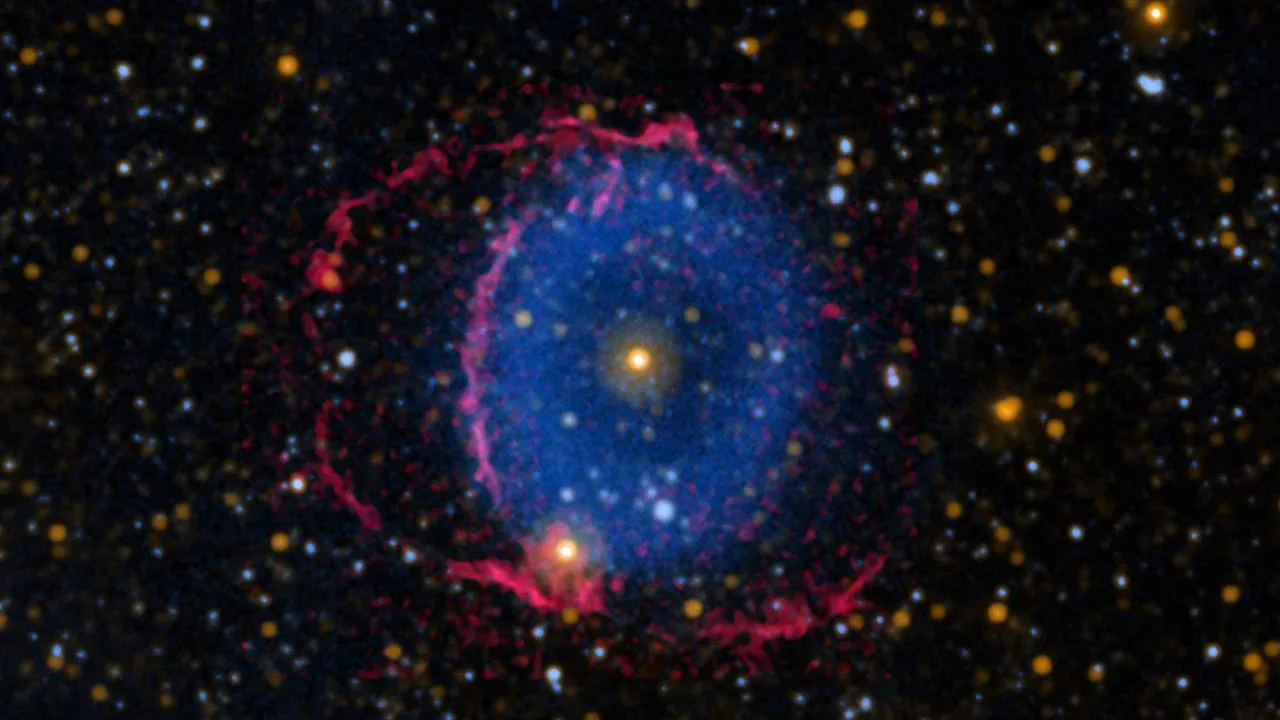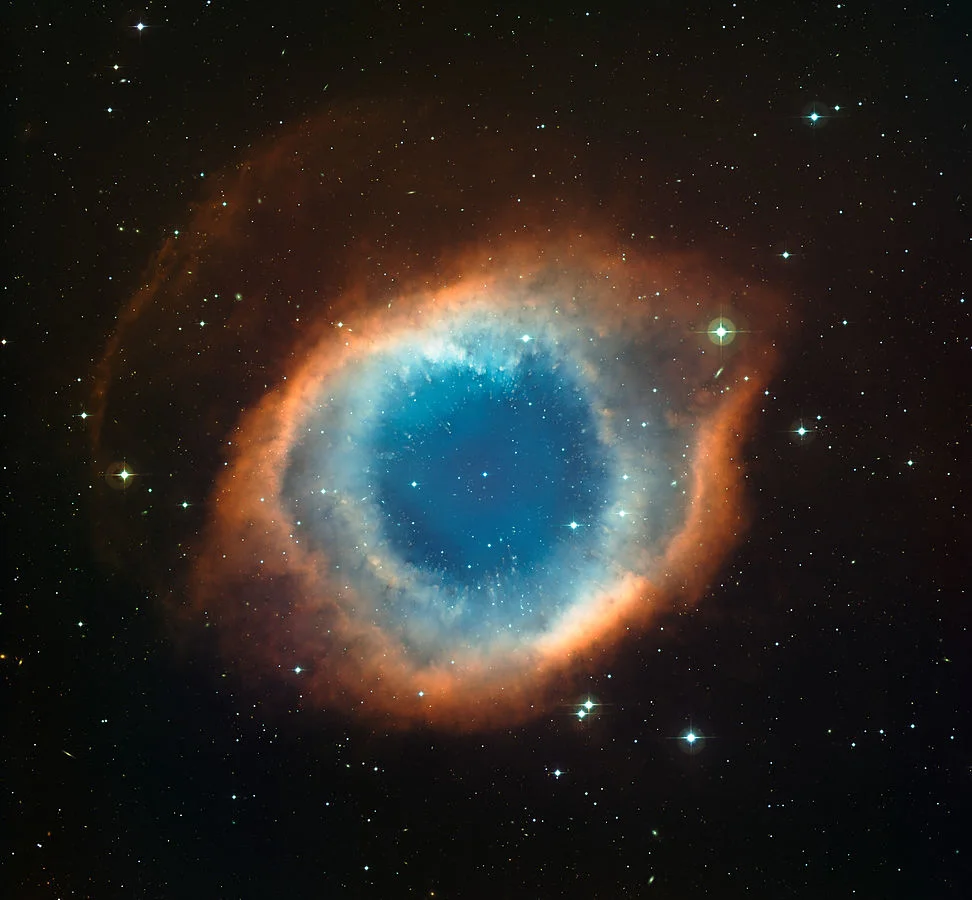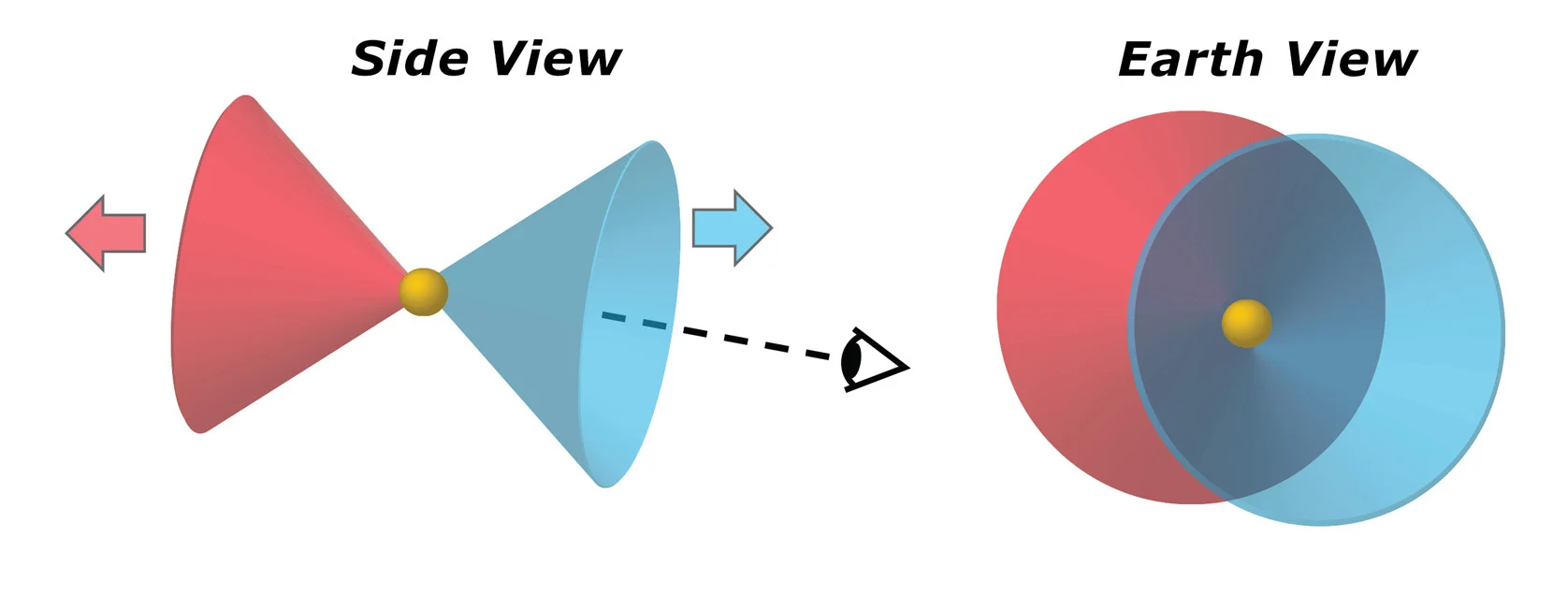
Mystery of the Blue Ring Nebula solved by a 'stellar missing link'
"Every time we thought we had this thing figured out, something would tell us 'No, that's not right.'"
For the past 16 years, a cosmic conundrum has puzzled astronomers. What caused the unusual Blue Ring Nebula to form? A new study just unravelled this mystery.
Far out in our galaxy, roughly 6,300 light years away from Earth, there is a somewhat unique object. At first glance, TYC 2597-735-1 — aka the Blue Ring Nebula — appears similar to other clouds of gas and dust in space. Astronomers often see the same kind of thing surrounding a neutron star or a pulsar — the leftover remnant of a massive dead star that went supernova long ago.

The Blue Ring Nebula, seen here as a combination of visible light and ultraviolet light, was first detected in 2004. A star similar to the Sun lies at its core. Credits: NASA/JPL-Caltech/M. Seibert (Carnegie Institution for Science)/K. Hoadley (Caltech)/GALEX Team
There are some significant differences between those supernova remnants and this nebula, though. Supernova remnants emit light across a wide range of the spectrum of light. The outer rings of the Blue Ring Nebula do show up in visible light. The 'blue' part of it (in the image above) only appears when astronomers view the area with a telescope that can detect ultraviolet light.
Most importantly, instead of having a tiny stellar remnant at its core, the Blue Ring Nebula surrounds a 'living' star.
Some active stars, such as those that have swelled into red giants, can produce nebulae as they slough off their outer layers. None of those nebulae look like the Blue Ring Nebula, though. So, astronomers had a bit of a mystery on their hands. How could a living star produce a nebula that looks more at home around a neutron star or pulsar?

The Helix Nebula was produced when a star like our Sun reached the end of its life and expelled its outer layers into this immense shell of gas and dust. Credit: NASA, ESA, C.R. O'Dell (Vanderbilt University), and M. Meixner, P. McCullough, and G. Bacon (Space Telescope Science Institute)
And this star is a weird one, too! According to the study, some of TYC 2597-735-1's characteristics reveal that it's old. At the same time, other elements don't agree.
In their efforts to figure out what was going on with this weird star and its seemingly out-of-place nebula, astronomers proposed a few ideas that didn't go anywhere.
One idea with promise was that a massive planet could be locked into a close orbit around the star. If there was a gas giant there, the star could be pulling it apart and expelling its gas into space around the system. The presence of the planet could then, theoretically, spin that gas into a nebula into this kind of shape. However, during observations in 2017, no evidence of such a planet was found.
"Every time we thought we had this thing figured out, something would tell us 'No, that's not right,'" Mark Seibert, an astrophysicist with the Carnegie Institution for Science and a member of the GALEX team, said in a Caltech news release. "That's a scary thing as a scientist. But I also love how unique this object is, and the effort that so many people put in to figure it out."
Seibert, who is co-author of the the new study that solves the mystery, was one of the first to spot the Blue Ring Nebula, in images taken by NASA's Galaxy Evolution Explorer (GALEX) space telescope, back in 2004.
WATCH BELOW: AMAZING IMAGES FROM 30 YEARS OF THE HUBBLE SPACE TELESCOPE
It was Keri Hoadley, however, a Caltech astrophysicist that joined the GALEX team in 2017, who spearheaded efforts to solve the mystery of the Blue Ring Nebula and its strange star. With the data from several observations over the 13 years since the nebula was discovered, she focused the investigation on constructing models to explain what various telescopes had shown them.
Among those enlisted to help was Brian Metzger of Columbia University. He specializes in producing detailed computer models to predict the behaviour of various cosmic phenomena. It was his specialty — stellar mergers — that would be the key to solving this mystery.
The model that best fit the Blue Ring Nebula turned out to be the merger of two stars — one that was roughly the same size and mass as our Sun, and a second smaller star, about one-tenth as massive. This event would have torn the smaller star apart, producing a cloud of debris around the more massive star, which would then have expanded outward in two cone-shaped lobes. While the expanding gas is transparent, colliding hydrogen molecules in the cloud emit ultraviolet light, which telescopes can detect. The nebula is brightest at the leading edge, where it shows up in visible light.

The model of the Blue Ring Nebula reveals that it is a pair of hollow, cone-shaped clouds of debris, moving in opposite directions away from the central star. With one cone travelling almost directly toward Earth, we see the nebula as two circles that partially overlap. Credit: Mark Seibert
"The merging of two stars is fairly common, but they quickly become obscured by lots of dust as the ejecta from them expands and cools in space, which means we can't see what has actually happened," Hoadley, who is the lead author of the new study, told Caltech.
"We think this object represents a late stage of these transient events, when the dust finally clears and we have a good view," Hoadley explained. "But we also caught the process before it was too far along; after time, the nebula will dissolve into the interstellar medium, and we would not be able to tell anything happened at all."
According to NASA, these stellar mergers could happen as often as once every decade. Still, they've never seen anything like the Blue Ring Nebula before. It appears to be the 'missing link' between early stage mergers, where the central star would be too obscurred to see, and those mergers that would have happened so long ago that there's almost no evidence left of them happening.
"We see plenty of two-star systems that might merge some day, and we think we've identified stars that merged maybe millions of years ago, but we have almost no data on what happens in between," Metzger told NASA. "We think there are probably plenty of young remnants of stellar mergers in our galaxy, and the Blue Ring Nebula might show us what they look like so we can identify more of them."






